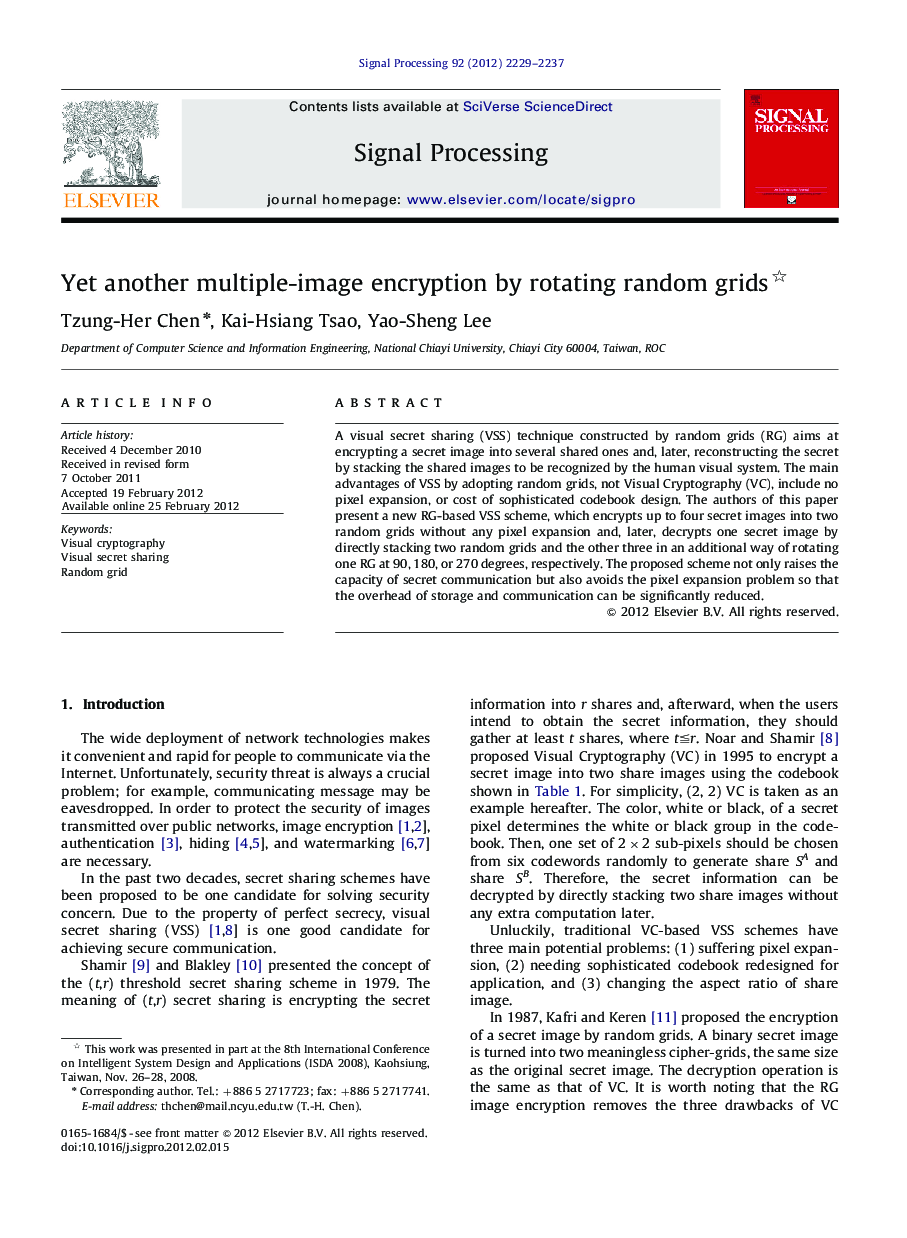| Article ID | Journal | Published Year | Pages | File Type |
|---|---|---|---|---|
| 564185 | Signal Processing | 2012 | 9 Pages |
A visual secret sharing (VSS) technique constructed by random grids (RG) aims at encrypting a secret image into several shared ones and, later, reconstructing the secret by stacking the shared images to be recognized by the human visual system. The main advantages of VSS by adopting random grids, not Visual Cryptography (VC), include no pixel expansion, or cost of sophisticated codebook design. The authors of this paper present a new RG-based VSS scheme, which encrypts up to four secret images into two random grids without any pixel expansion and, later, decrypts one secret image by directly stacking two random grids and the other three in an additional way of rotating one RG at 90, 180, or 270 degrees, respectively. The proposed scheme not only raises the capacity of secret communication but also avoids the pixel expansion problem so that the overhead of storage and communication can be significantly reduced.
► A VSS scheme encrypting up to four secrets into two random grids is proposed. ► Decrypt secrets by stacking two RGs by rotating one at different degrees. ► The proposed scheme raises the capacity of secret communication.
